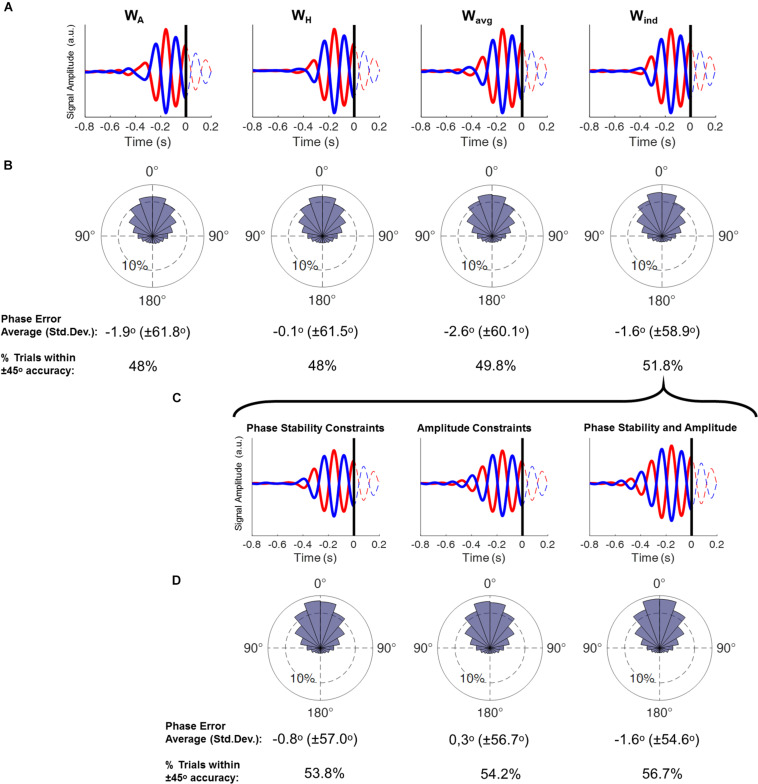FIGURE 3.
(A) Time course plots display the averaged epochs obtained by running the real-time phase detection algorithm with resting-state EEG, with data obtained by using each spatial filter. Here only trials that were classified as positive peak (red) and negative peak (blue) were included. Time = 0 refers to the time point the theta phase was being estimated. Columns display the results from each spatial filter. (B) Phase histograms show the accuracy of the phase estimation from each spatial filter, obtained by subtracting the estimated phase of all epochs by their corresponding “gold-standard” phase (phase-bin width 20°, inner ring corresponds to 10% of the total trials). Below are the circular averages and standard deviations of the results, and the proportion of epochs within ± 45° accuracy (ANOVA, p = 0.0025; post-hoc WA = WH < Wavg < Wind). (C) Time course plots display the averaged epochs obtained by running the real-time phase detection algorithm with resting-state EEG (as in A), with data obtained by using the Wind filter and followed by different signal constraints: Phase stability, signal amplitude and both phase stability and amplitude constraints. (D) Phase histograms show the accuracy of the phase estimation (as in B) from the signal after application of each constraint (ANOVA, p = 0.0002; post-hoc [NO constraints] < [phase stability] = [amplitude] < [phase stability AND amplitude]).

